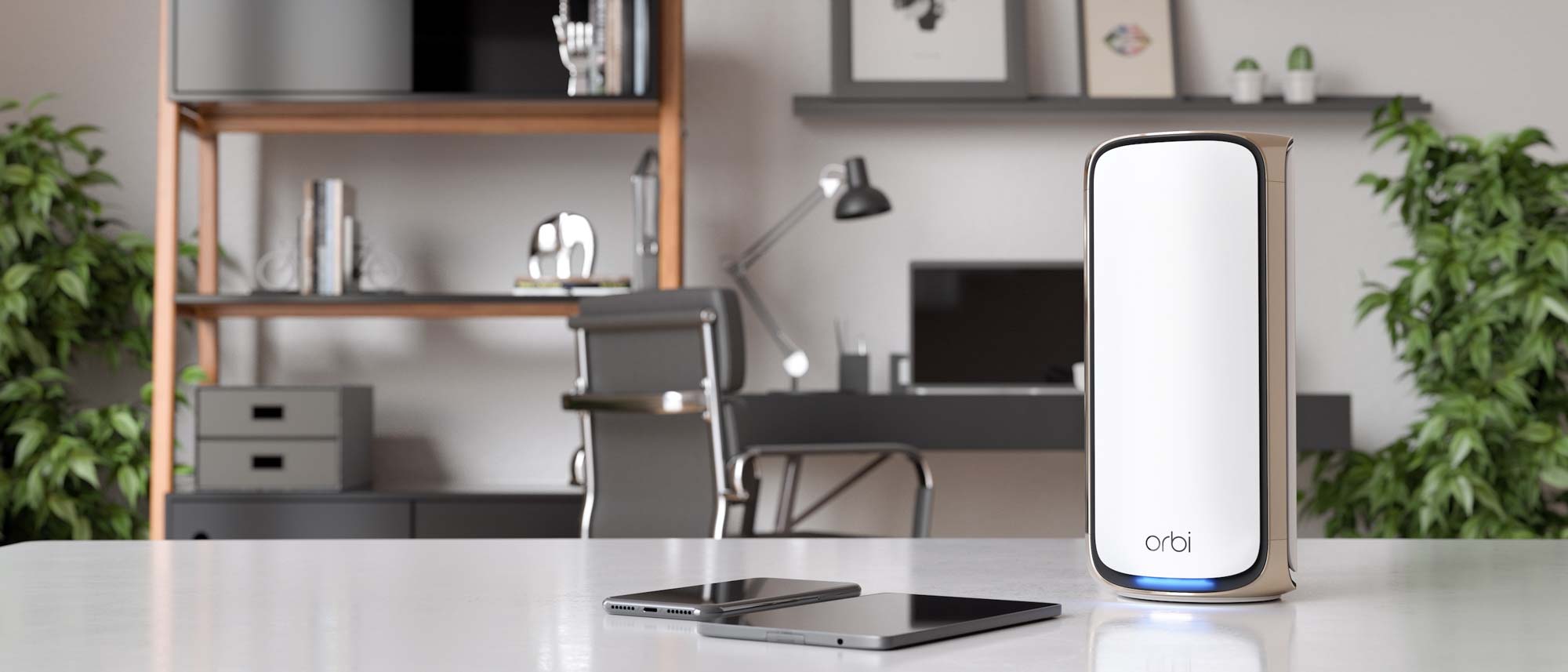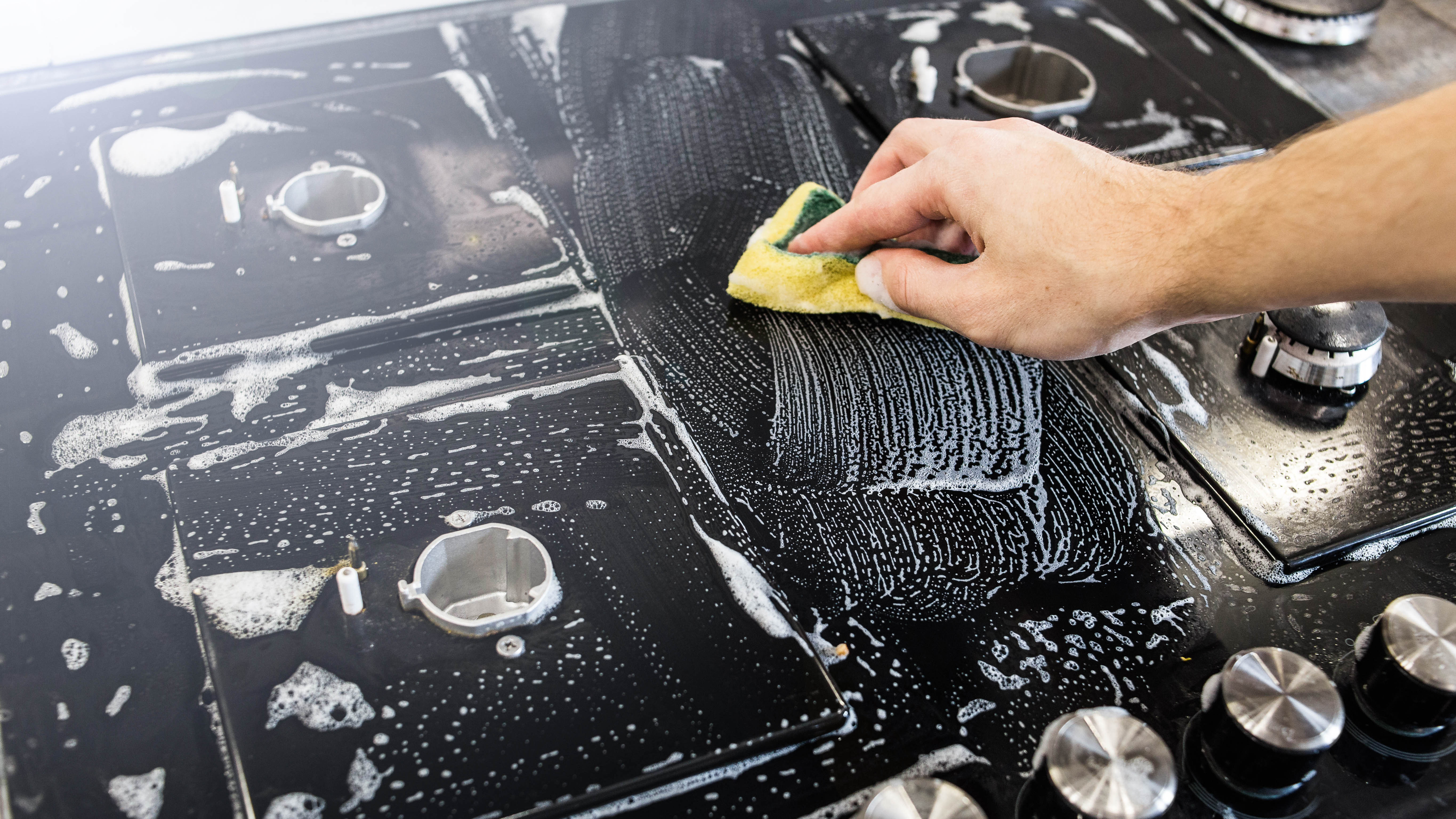Tom's Guide Verdict
It may not be the first Wi-Fi 7 mesh networking kit to hit the market, but Netgear’s Orbi RBE973 makes up for being tardy with the ability to move data at warp speed but is shockingly expensive and less effective over long distances.
Pros
- +
Top mesh LAN performance
- +
Extra layer of security
- +
320MHz ultra-wide data channels
- +
Two 10Gbps and four 2.5Gbps networking ports
Cons
- -
Outrageously expensive
- -
Performance better close up than at long distances
- -
One year warranty and 90-days of support included
Why you can trust Tom's Guide
Wi-Fi specification: BE27000 (802.11be)
Number of antennas/removable: 12/No
Router ports: One 10Gbps WAN input, one 10Gbps and four 2.5Gbps LAN
Satellite ports: One 10Gbps, two 2.5Gbps
Processor/memory/storage: Quad-core 2.2GHz/1GB/512MB
Wi-Fi chip: Qualcomm Networking Pro 1620
Peak 802.11ax performance: 2.002Gbps (at 15 feet)
Maximum range: 95 feet
Size: 11.4 x 5.5 x 5.1 inches
Estimated annual electricity cost: $60 (for router and two satellites)
Being second only counts when you do something better or faster, and that’s the idea behind Netgear’s Orbi RBE973, the company’s first Wi-Fi 7 mesh networking kit. The Orbi RBE973 router and two mesh nodes provide the latest in wireless LANs with everything from 6GHz integration and ultra-wide data channels to a quad-band design and 4K QAM operations; the company also sells two packs and individual units.
The result is top speed networking that breaks into the 2Gbps realm. In fact, its ability to move data at lightning speeds can make wired gigabit Ethernet look slow and is perfect for those with high-speed internet connections. It may be the fastest close-up but the Orbi RBE973 lags at longer distances, making this the mesh kit to get for a small or mid-sized home. It is second-best when it comes to Netgear’s one-year warranty and its onerous 90-day support policy. This penny-pinching is even more galling when you consider that an Orbi RBE973 three-pack costs $2,300, 50% more than the already-expensive Deco BE85.
Our Orbi RBE973 review will help you decide if this is the best mesh Wi-Fi system for you or if you’d be better off with a cheaper, Wi-Fi 7 mesh router.
Netgear Orbi RBE973 review: Pricing and availability
Among the most expensive home networking hardware available, the Orbi RBE970 family sets a new standard for high performance and – unfortunately –
price. The white Orbi RBE973S (available at a variety of stores) and black RBE973SB (sold through Netgear’s site) three-piece mesh kits include a router and a pair of satellites. The kit is capable of covering 10,000 square feet, according to Netgear engineers, but at $2,300, about $800 more than TP-Link’s Deco BE85.
If a three-pack is out of your price range, the Orbi RBE972S or 972SB two-pack can be had for $1,700. Consisting of a router and one node, the Orbi RBE972 is rated to fill a 6,600 square foot home with Wi-Fi; it costs $200 more than the Deco BE85’s three-pack and nearly double the price of the BE85’s two-pack.
Finally, a $900 RBE970 satellite costs about what a good Wi-Fi 6E mesh set goes for. It can add 3,300 square feet of coverage to extend coverage or fill in dead spots.
Netgear Orbi RBE973 review: Design
Orbi devices have had a familiar oval tower industrial design since they first launched. That isn’t the case anymore, with the Orbi RBE970 family sporting a new triangular tower visual aesthetic that will extend to other products in the future.
Both the router and nodes are 11.4 inches tall and measure 5.5 by 5.1 inches. That’s roughly twice the size of TP-Link’s Deco BE85 but one-third smaller than the older Wi-Fi 6-based Orbi RBKE 960 family.
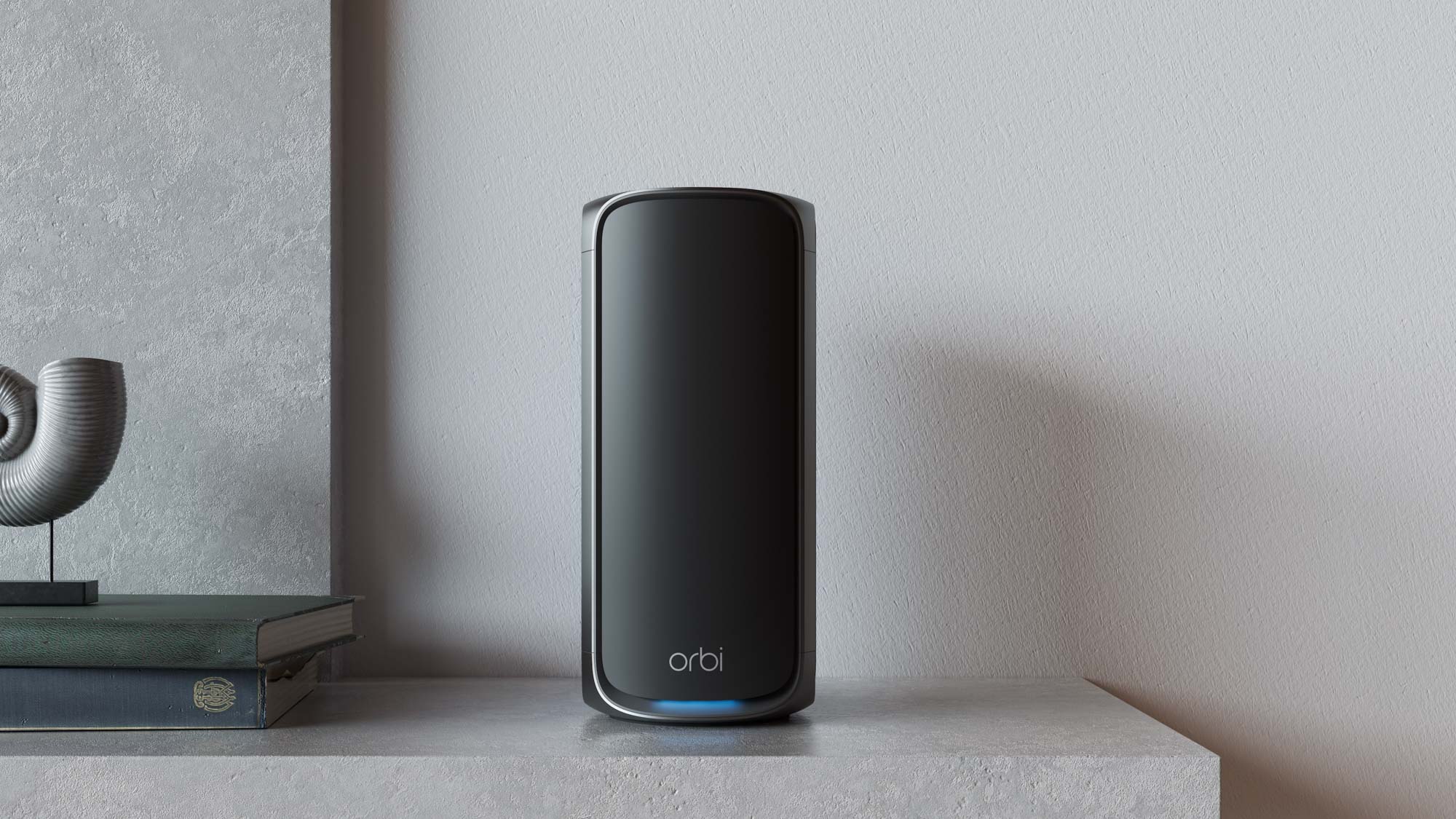
Available in white with black and dull chrome trim or in elegant black, the units have vertical cooling vents that allow hot air to escape at the top. They are preconfigured at the factory for easy connections and later in October, Netgear will soon have wall mounting brackets available.
Each device has a large Orbi logo and a light bar up front. The LED shows what’s going on inside and glows blue during start-up and turns off when everything is fine. When it’s red, the device needs attention.
Both devices are powered by Qualcomm’s high-performance Networking Pro 1620 Wi-Fi chipset and a quad-core 2.2GHz processor. Able to support up to 200 devices at a time – twice that of the Deco BE85 – the gear has 1GB of RAM and 512MB of flash storage for firmware and settings. It showcases Wi-Fi 7 tech by linking different channels together, blasting data over ultra-wide 320MHz data channels as well as tapping into 4K Quadrature Amplitude Modulation (QAM) and Preamble Punching.
The devices have been designed with high-speed Internet connections in mind, the router having a single 10 Gbps WAN input as well as a 10 Gbps and four 2.5/1.0 Gbps downstream LAN ports. The nodes have one 10 Gbps and two 2.5/1.0 Gbps networking connections. Both lack a USB port for making the contents of an external drive available across the network. There’s also a reset button on the back.
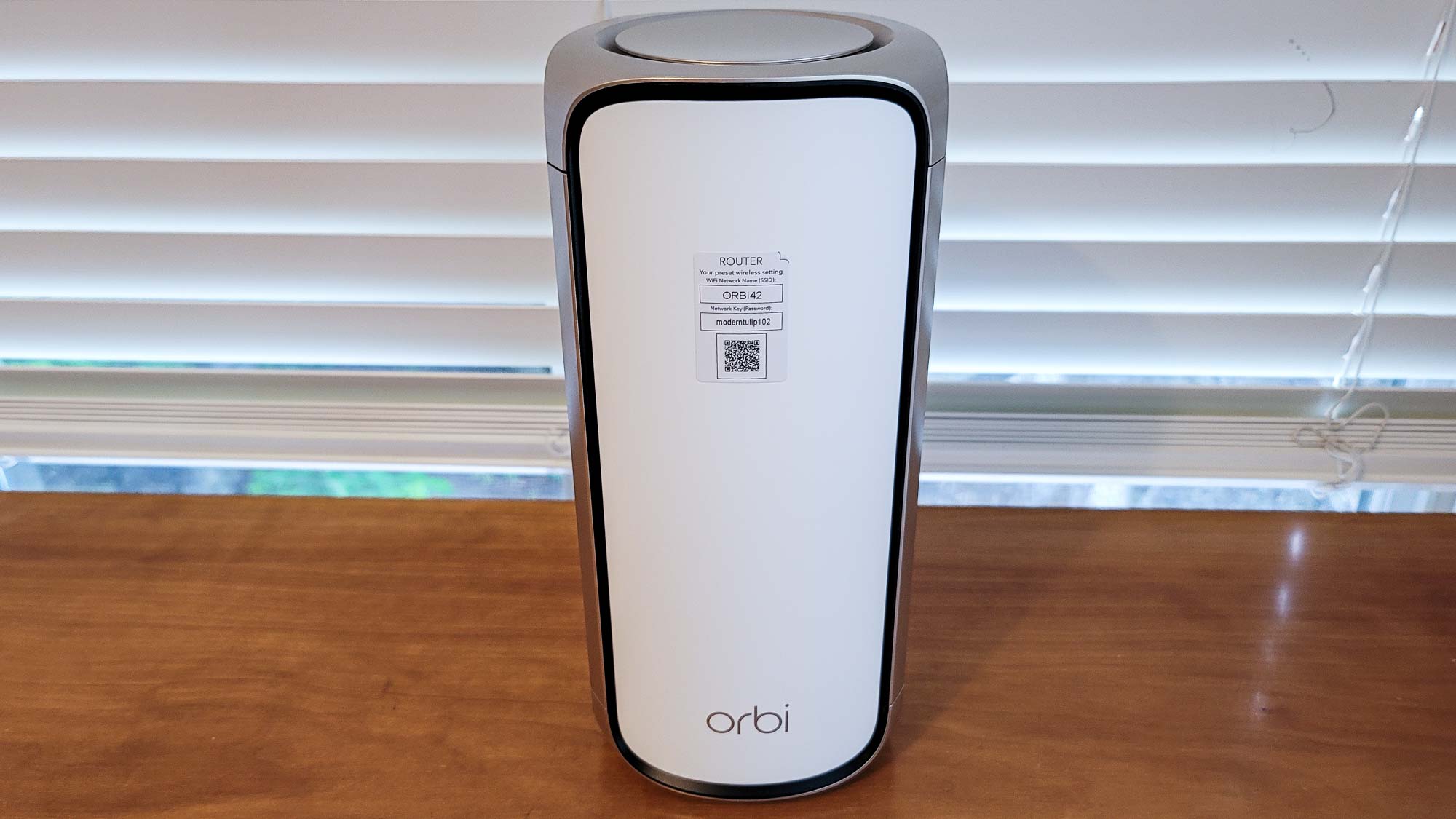
Based on the Orbi RBE973’s quad-band design, it can move 16 independent streams of data with 4x4 data flow. Its 12 amplified isotropic antennas create a spherical transmission pattern with equal throw in every direction. It’s all a step or two ahead of the Deco BE85’s 12 stream/8 antenna triband design. The Orbi RBE973 delivers up to a theoretical peak of 27Gbps, 5Gbps higher than the tri-band Deco BE85’s top speed.
As is the case with earlier Orbi gear, the RBE970 family uses a dedicated 5GHz wireless backhaul channel for communications from the satellites to the host router; the router optimizes the flow by tapping into portions of the 6GHz band when needed. There is a twist, however, because rather than the expected 160MHz data channels, the 6GHz backhaul can use a proprietary 240MHz data delivery scheme to squeeze in more data. For peak performance, the Orbi RBE970 family can use a 10Gbps wired connection for backhaul with a Cat 6 cable.
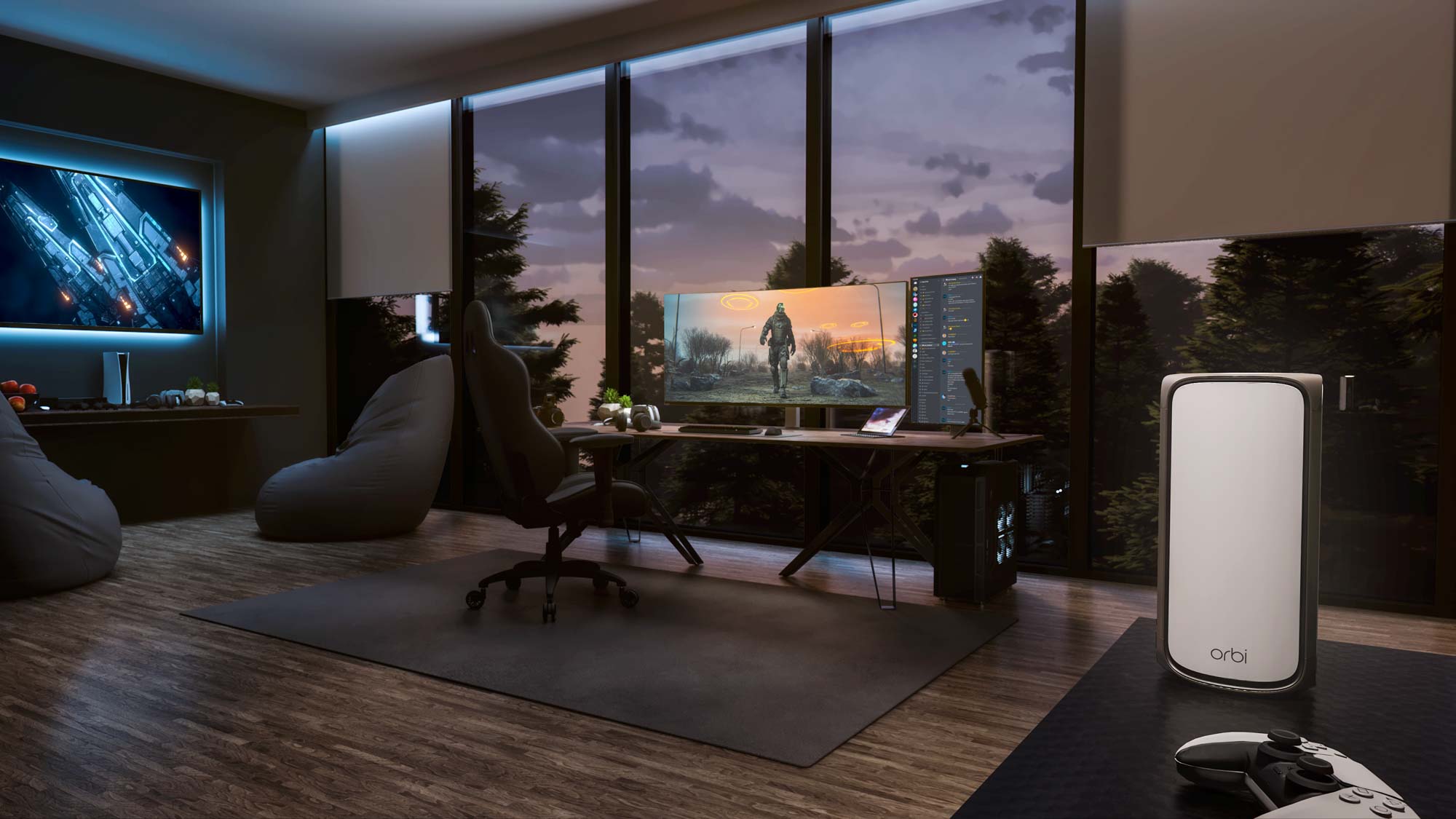
On the downside, the biggest thing holding back Wi-Fi 7 has nothing to do with the Orbi RBE973. It is the fact that there continues to be a lack of choice when it comes to client hardware capable of tapping into the new Wi-Fi spec’s performance potential. I used a OnePlus 11 for my three week evaluation period, and it worked fine with Wi-Fi 7 gear, although at a slight speed disadvantage. Sadly, it might take until 2024 for Wi-Fi 7 notebooks to become available.
Netgear Orbi RBE973 review: Performance
The Orbi RBE973 may not be the first Wi-Fi 7 mesh networking kit but it just might be the fastest. Based on using the gear for three weeks in my 3,500 square foot home, the three Orbi devices not only left no dead zones but were reliable and top performing, particularly close up.
With the OnePlus 11 close to the router and using a Mac Mini as the server, I got 4.324 Gbps of throughput using the iPerf3 benchmark set to mimic 20 users. Astounding, yes, but under the same conditions, IxChariot with 10 simulated users gauged the throughput at 2.675 Gbps.
At the real world distance of 15-feet, the Orbi RBE973 was just as impressive with 3.843Gbps using iPerf3 and 2.003 Gbps with IxChariot, outstripping the Deco BE85’s 1.736 Gbps (with IxChariot) and 2.913 Gbps (with iPerf3). This should warm the hearts of data hogs
As a point of comparison and compatibility with Wi-Fi 6E, my Samsung Galaxy Book received 1.576 Gbps of data from the Orbi RBE973 router at 15-feet. It’s a step down, but a very impressive result with hardware that’s a generation older than Wi-Fi 7.
| Header Cell - Column 0 | Netgear Orbi RBE973 | TP-Link Deco BE85 | Netgear Orbi RBKE963 | TP-Link Deco XE75 |
|---|---|---|---|---|
| 15 feet | 2.003Gbps | 1.736Gbps | 1.009Gbps | 522.1Mbps |
| 50 feet | 495.1Mbps | 790.4Mbps | 190.5Mbps | 255.4Mbps |
| 75 feet | 174.8Mbps | 179.2Mbps | 93.4Mbps | 112.7Mbps |
| 90 feet | 25.3Mbps | 42.6Mbps | 39.9Mbps | 51.1Mbps |
With 50 feet separating the router and the test phone, the Orbi RBE973 pushed 495.1 Mbps to the test phone as it switched from 6- to 5GHz transmissions. That’s second best compared to the Deco BE85’s 790.4 Mbps of data. This makes the Orbi RBE970 family best for high-speed use in the same room or in an adjacent one.
The throughput fell off even more at 75 feet, with 174.8 Mbps delivered to the test system, roughly on a par with the Deco BE85’s 179.2 Mbps. At our terminal distance of 90-feet, the Orbi RBE973 moved 25.3 Mbps, much less than either the Deco BE85 (42.6Mbps) or the Wi-Fi 6E pair, the Orbi RBKE963 (39.9 Mbps) and the Deco XE75 (51.1 Mbps). The router had a range of 95-feet.
The Orbi RBE973 moved 1.090 Gbps of data 25-feet across a room and through a wall. This is 25% faster than the Deco BE85’s 816.3Mbps and nearly double the ability of the Wi-Fi 6E-based Orbi RBKE963’s 547.9 Mbps.
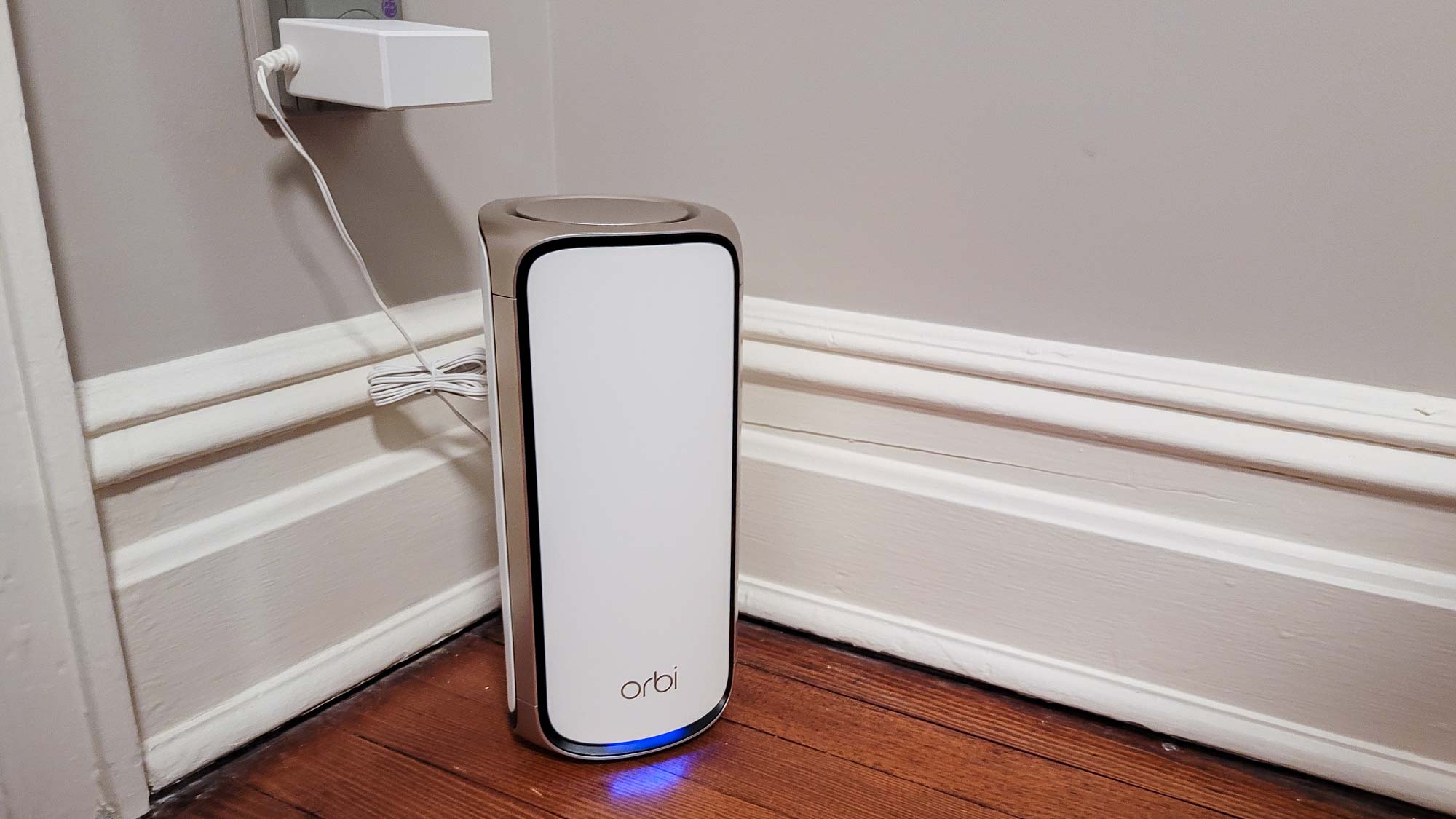
Finally, with the satellites set up a floor above and below the router, I tested its ability to fill a house with data. With the phone a floor above the router and 40-feet down a hall from the RBE973’s node, the network delivered 471.8 Mbps to the client. That’s more than six times the throughput of the Deco BE85 under the same conditions. With the test phone set up in the basement, a floor below the router and connected via a node 40 feet away, the Orbi RBE973 moved 251.7 Mbps, almost double the BE85’s 140.0 Mbps
It had no problem with my informal network saturation test, where I played videos on an HP Dragonfly notebook while Spotify music flowed from a ThinkPad T470 and an iPad Pro was set to stream the BBC news feed. As the bytes were flowing, my Lenovo desktop was reading and writing files with my RAID storage system. All the audio and video came through without a glitch or freeze.
The Orbi RBRE973 devices were warm to the touch but never got above 95 degrees Fahrenheit. While working, the host router consumed 20.2 watts while the nodes each used 11.1 watts, but there’s no power-saving idle mode. It adds up to a power bill of $60 per year if you pay the national average of 16 cents per kilowatt hour of electricity. That’s a few dollars less than the Deco BE85’s $68 a year.
Netgear Orbi RBE973 review: Setup
The Orbi RBE973 can be set up either with a Netear’s Orbi app or with a connected browser; the URL is “myorbi.net”. There are versions of the app for Android or iOS. Each approach has lots of help and illustrations for newbies.
After plugging in the host and two satellites, I connected my Samsung Galaxy Note 20 to the default network name that’s printed on a sticker. I picked a photo of the equipment on the app and entered that there are two satellites to connect.
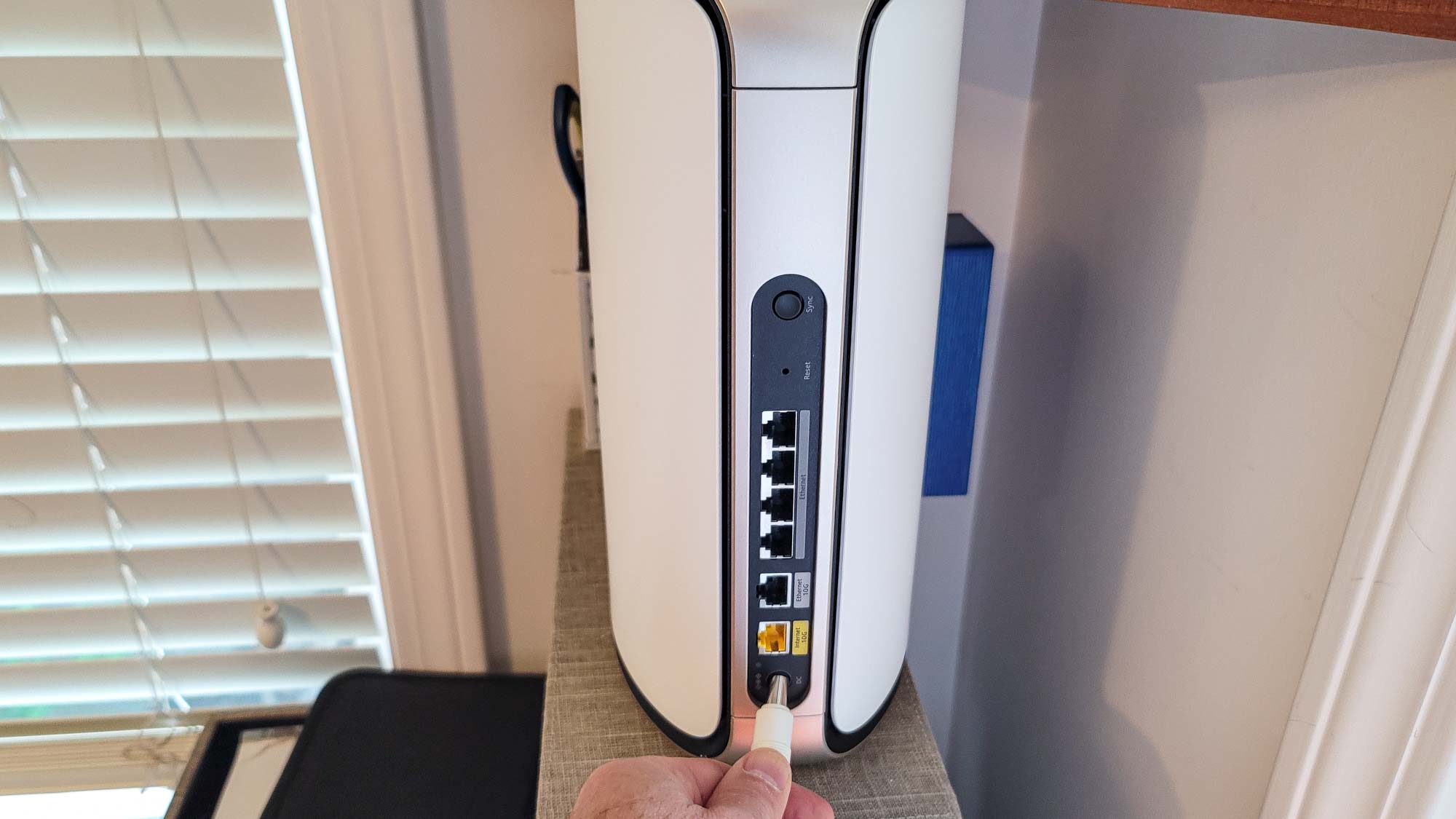
The app detected the gear quickly and I added a network name and password. There was no opportunity to set them up as separate networks with individual names.
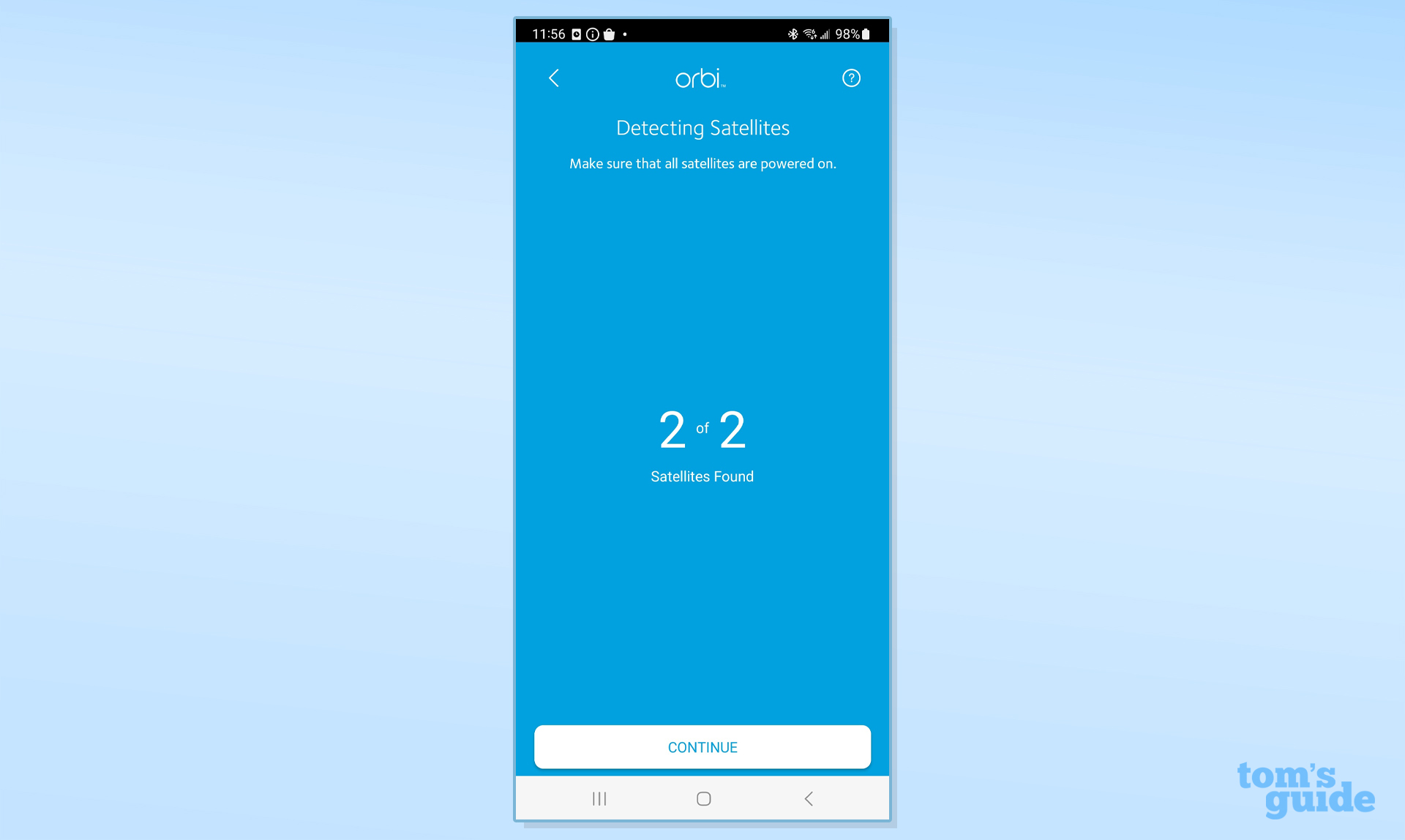
After I added an administrative password and answers to two personal challenge questions, the app completed the settings. Start to finish, it took 13 minutes to set up, an eternity compared to other mesh kits that take half as long but an improvement over the Orbi RBKE 963’s nearly 20 minute installation.
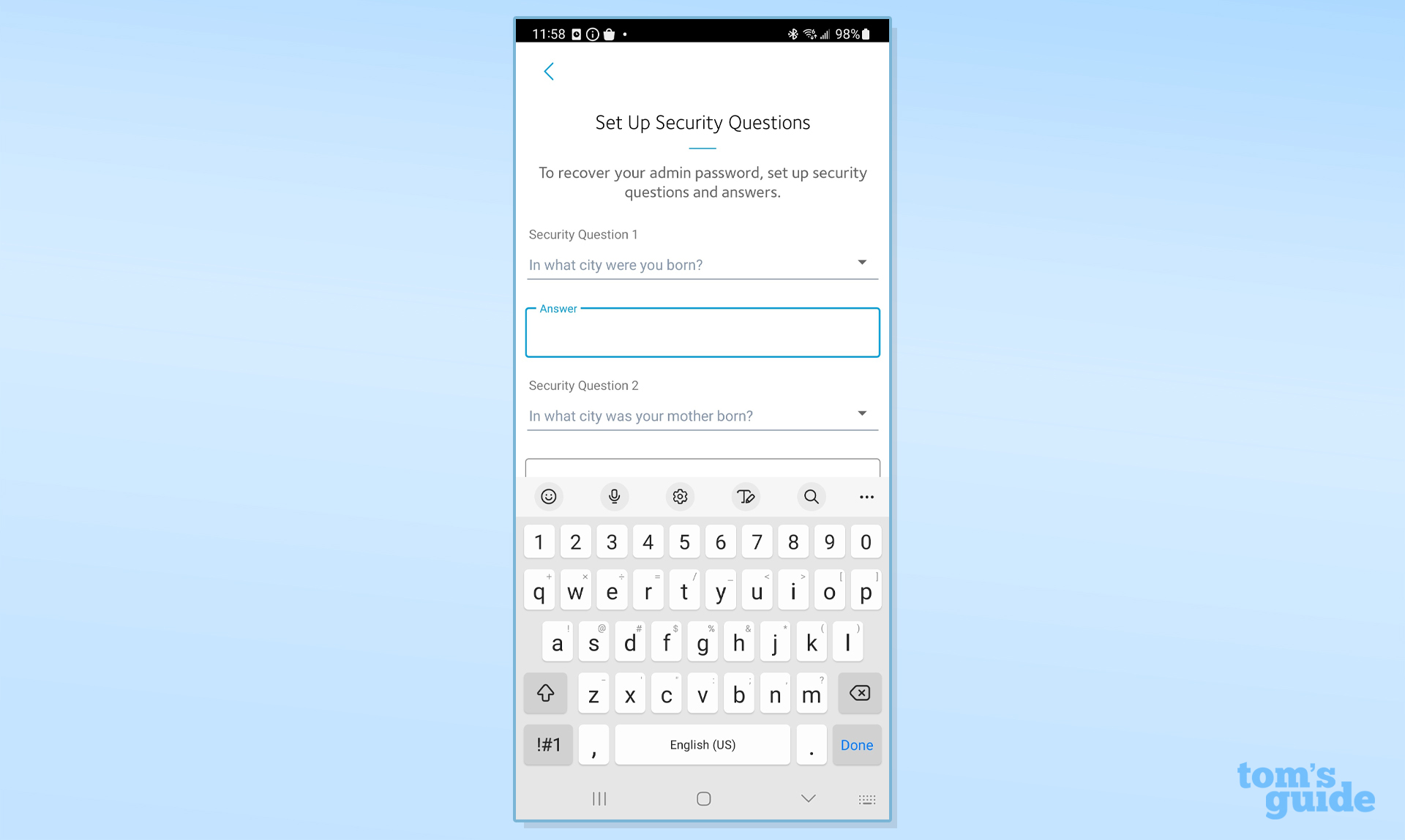
It worked on the first try. Finally, I created an account with a password and declined to spend $45 for 2 years of warranty and support, something that a $2,300 product should include.
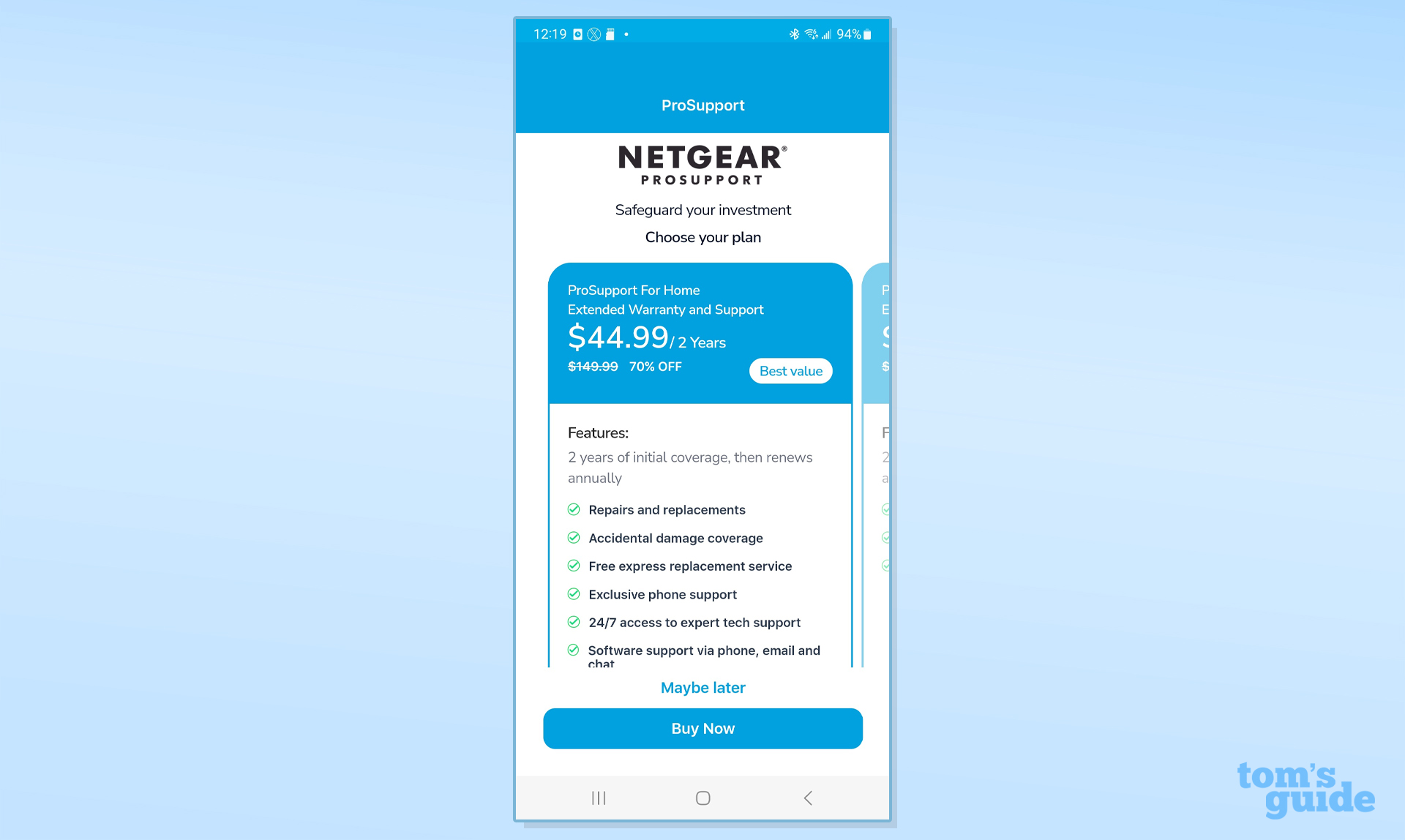
Netgear Orbi RBE973 review: Configuration
The Orbi RBE973 provides freedom of configuration choice with the app (for simple changes) and a connected browser (for more detailed options). The app’s main page has 10 boxes, although you can only see four or six at a time.
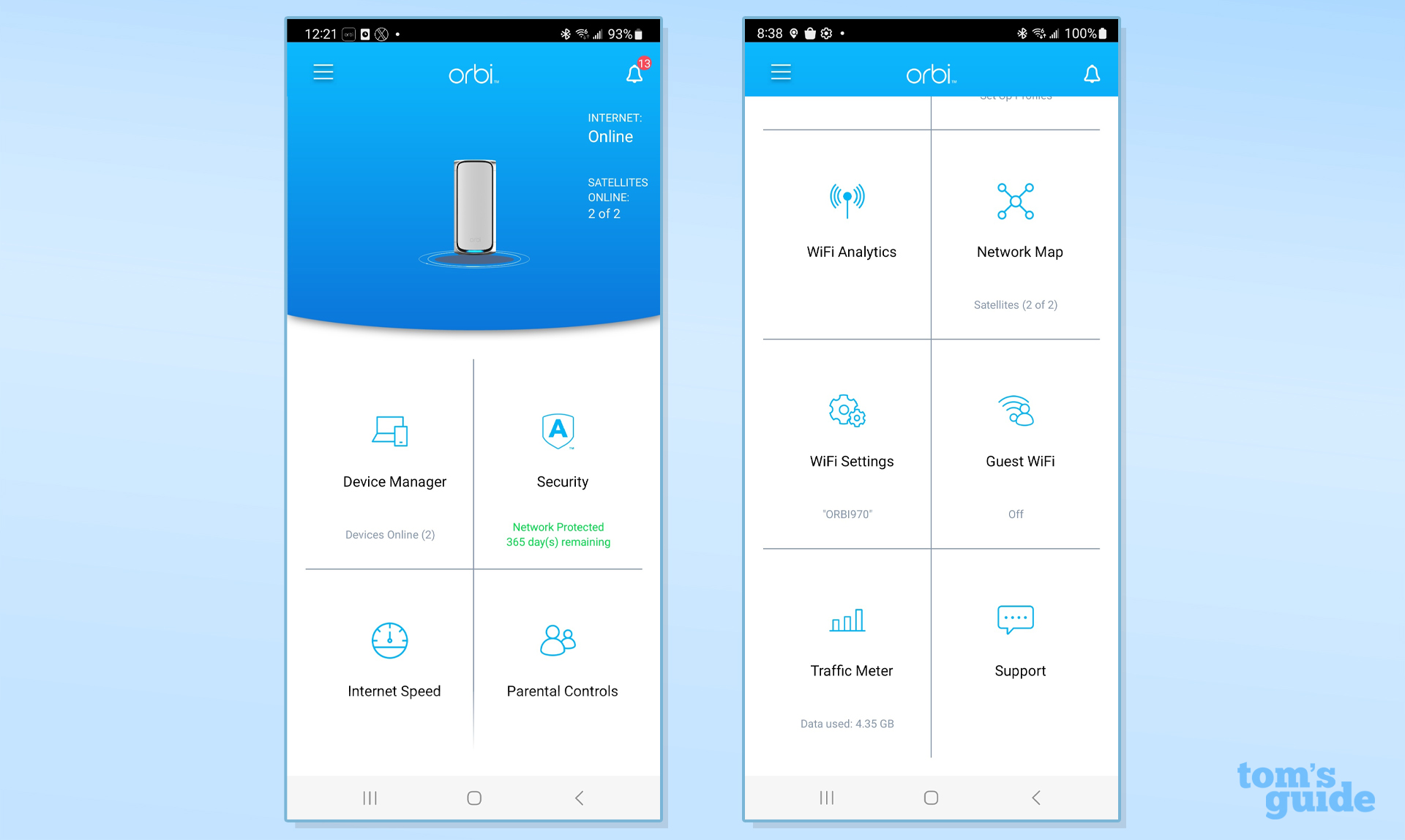
Each box leads to different functional areas, from Device Manager (showing connected devices), Security (the status of the Armor software) and Internet Speed (with Ookla’s SpeedTest) to Parental Controls (to keep impressionable eyes safe online), WiFi Analytics (measuring signal strength), Traffic Meter (to see where the data is going) and Guest WiFi (for a separate LAN) and Support. A level below is lots of detailed data, like the Device Manager’s list of what’s connected.
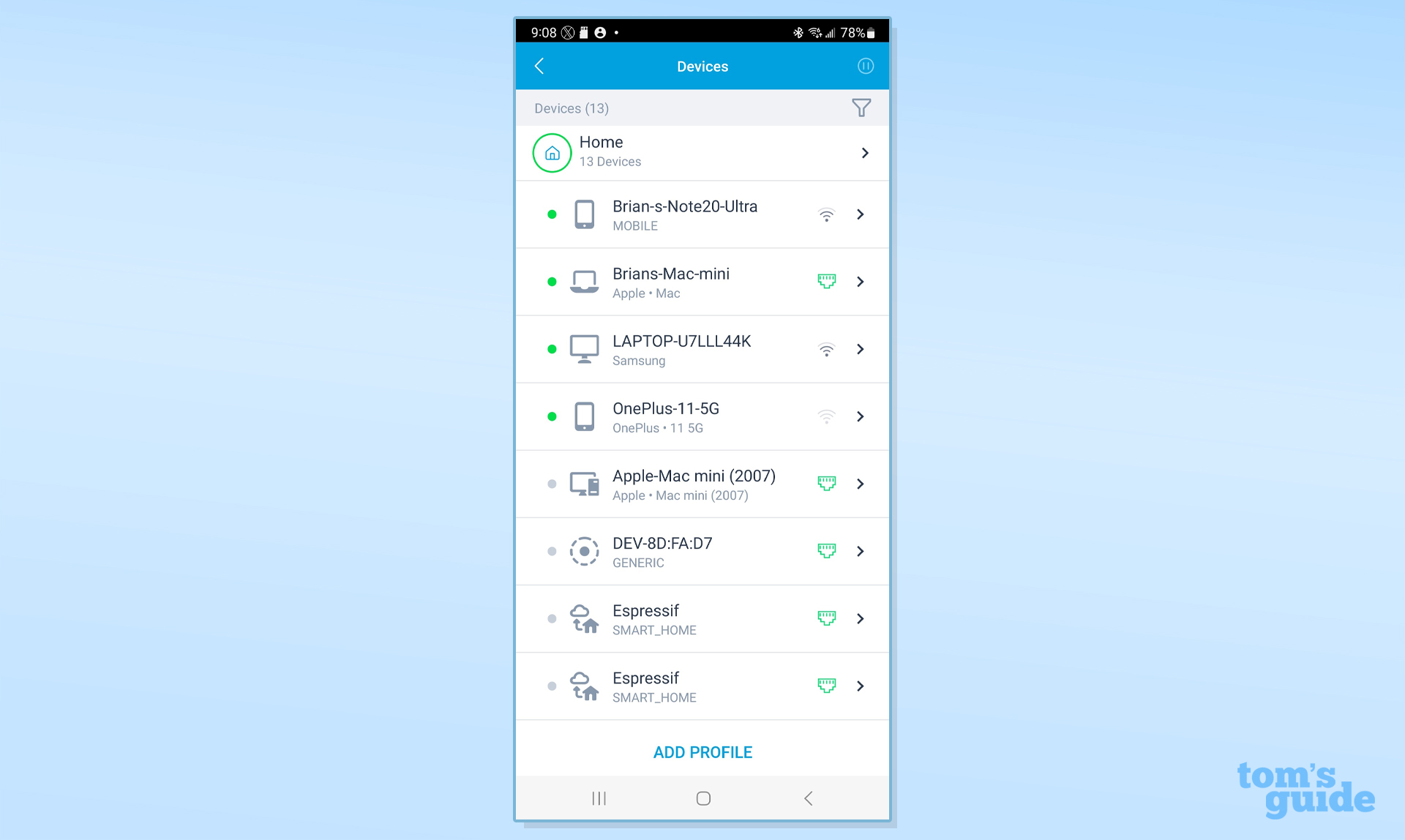
The Network Map shows the topology and the system’s flexibility. When it was first set up, the Orbi software indicated that it created a straight line topology where one node was feeding the other. It later optimized itself so that each node had a direct router connection.
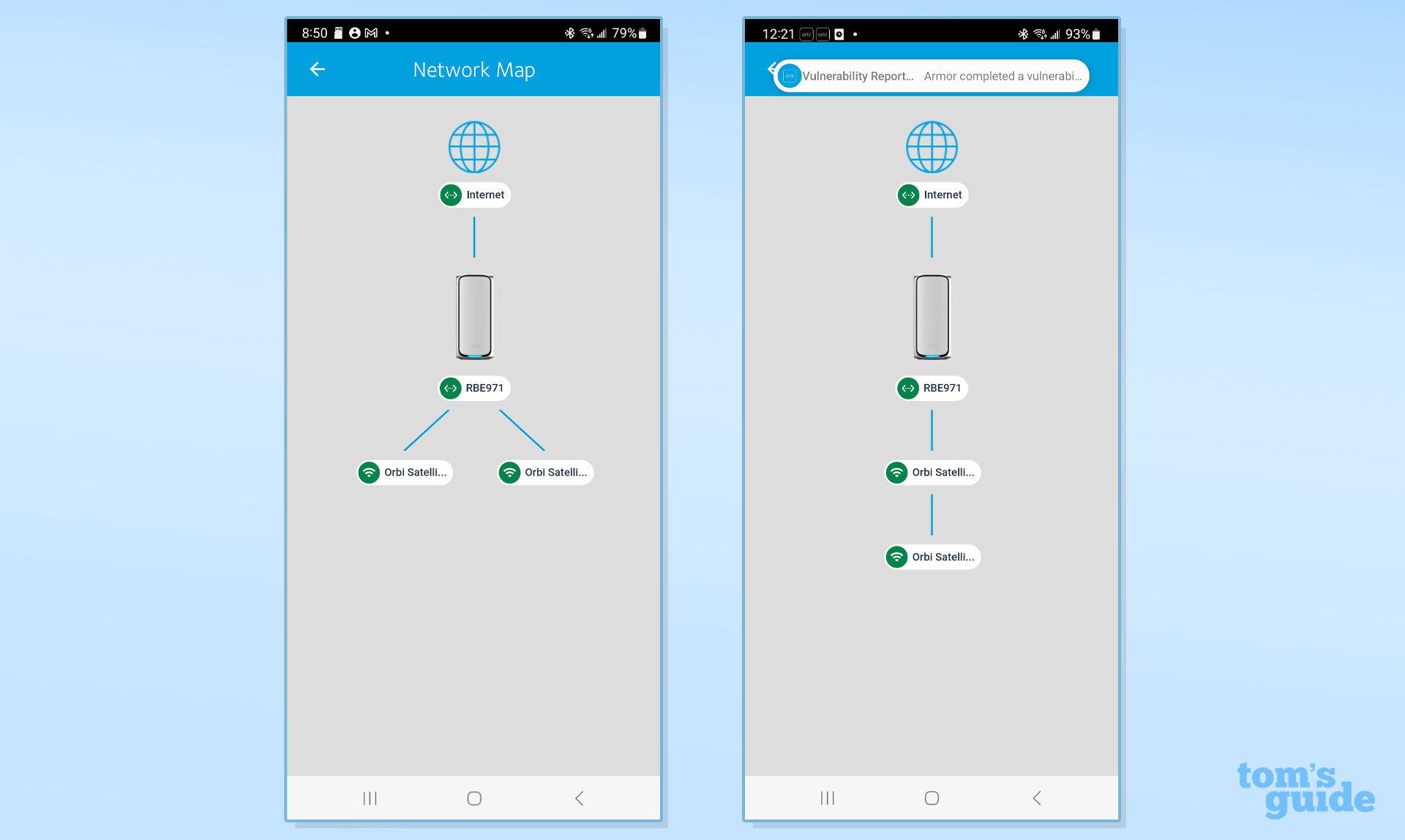
When I went into the WiFi Analytics section, I got a full view of the router and nodes connection details. In addition to the overall signal strength, there are screens that show the current channel and how solid the connection is.
There’s also the three-line hamburger interface that opens Settings, Account Management and other areas that includes ways to add a new node or reboot the system. The WiFi Settings section opens the ability to change the name and password, but not to split the set up into separate networks for each band. It’s easy to share the login info with a QR code.

As expected, the browser interface is deeper, with everything from running the gear as an access point or router to setting up port forwarding. The Attached Devices area consolidates the nodes and connected devices.
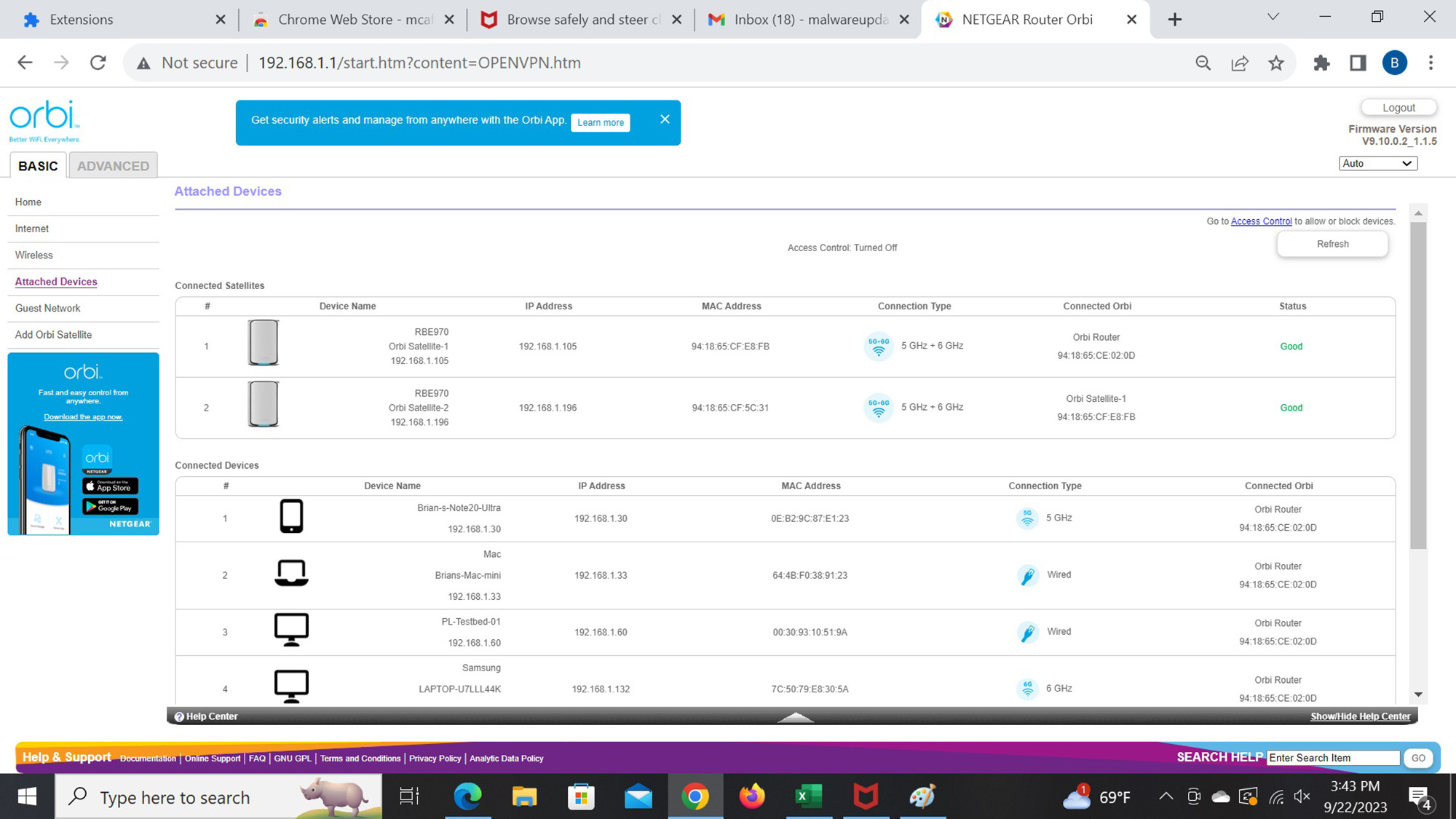
In addition to a traffic meter to help tune the network, the Advanced section shows how to set up the router as a VPN server and use a Dynamic DNS service. I really like the ability to use short or long preamble and set up a password for protecting the wireless backhaul traffic. It doesn’t allow adjustment of the CTS/RTS threshold, however, but few will miss it.
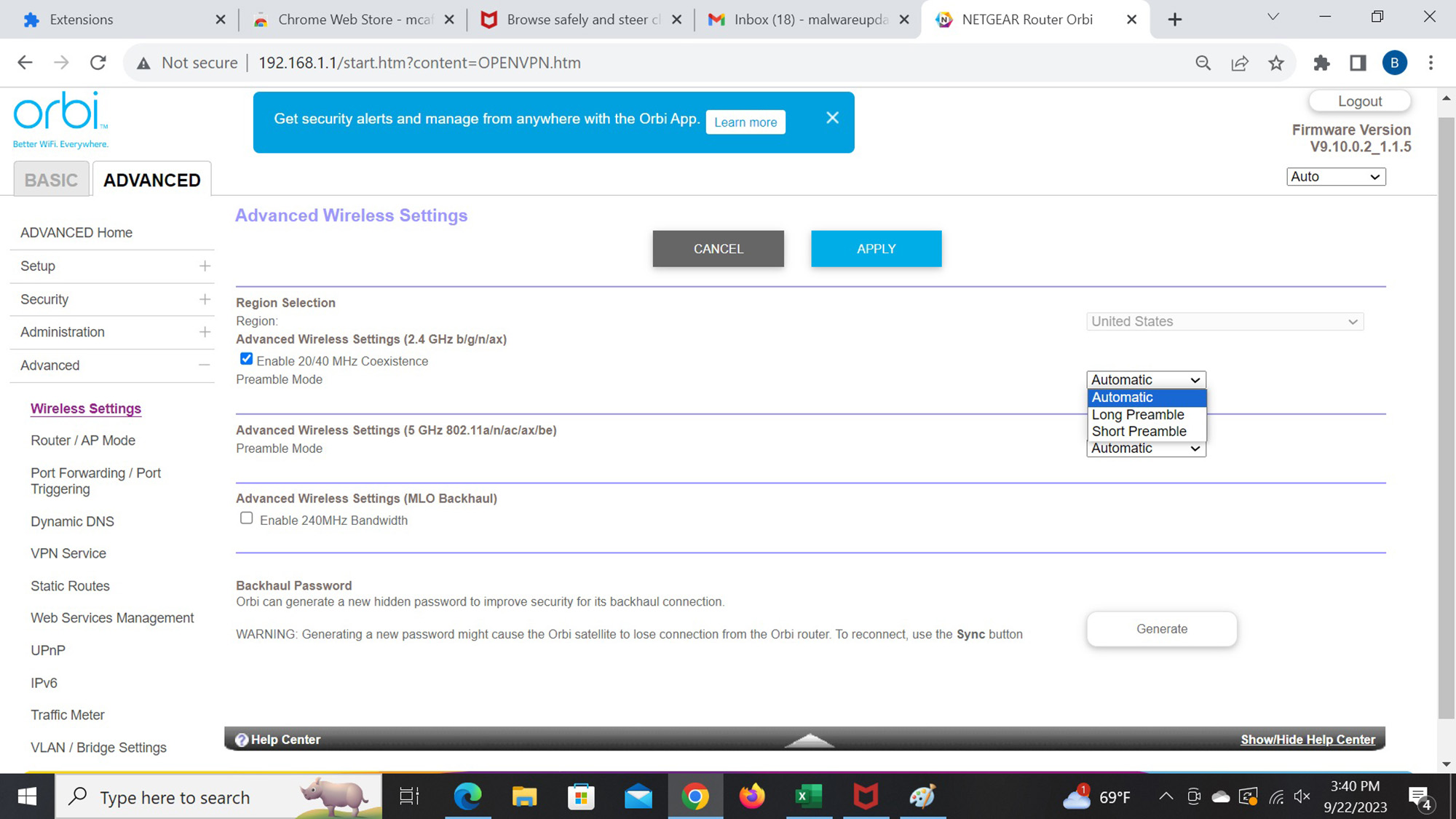
My favorite is the ability to send backhaul data using 240MHz channels rather than slower 160MHz ones. The nodes can also be connected via cables for top performance.
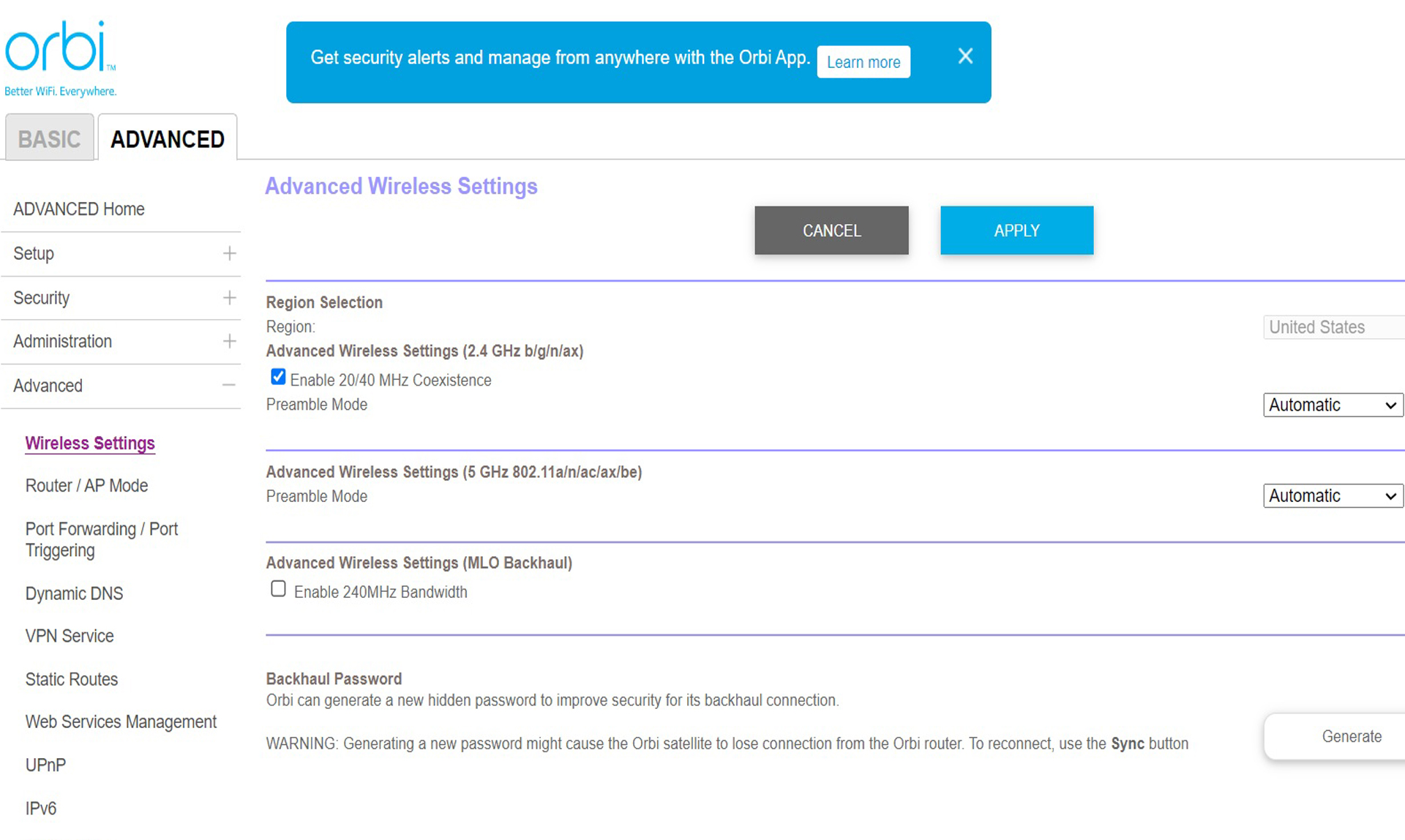
Like with other Orbi devices, the RBE973 includes a year of Armor security software. It works both from within the router and cloud as well as at the client level with an unlimited license for Bitdefender Total Security; there are apps for Windows, Mac, Android and iOS. After the trial ends, it costs $100 per year and is a bargain if you have lots of computers.
On the other hand, the one-year warranty and 90-day support policy comes up short compared to TP-Link’s two years of coverage and unlimited support for the Deco BE85 mesh set.
The support Netgear offers is excellent. The app has a link to get help and there’s the ability to start a phone call or online chat. They’re available 24/7, and the site has among the best assortment of videos, troubleshooting tips and FAQs.
Netgear Orbi RBE973 review: Verdict
Being second isn’t always gratifying, ask Buzz Aldrin. But in this case, the top performance squeezed out of the Wi-Fi 7 protocol was worth the wait, and Netgear’s Orbi RBE973 is the fastest mesh kit available anywhere. It not only can use 320MHz data channels, 4K QAM modulation and 6GHz transmissions but makes the most of these new techniques to push more data. In fact, it is the first to break through the 2 Gbps barrier.
To that end, the Orbi RBE973 adds an excellent assortment of inputs, particularly for those with high-speed data connections. Its Armor layer of security is among the best at keeping a network safe and secure in a world gone mad with malware but it lasts for only a year and the company’s warranty and support duration come up short.
Far from perfect, its performance is truly spectacular at short range, like in the same room or just next door. That makes it better for a small home or apartment than a huge home. On the surface the Orbi RBE973’s $2,300 price tag seems to be an indulgence, although if price were no object, I would buy it right away because don’t we all deserve to get the best.
Brian Nadel is a freelance writer and editor who specializes in technology reporting and reviewing. He works out of the suburban New York City area and has covered topics from nuclear power plants and Wi-Fi routers to cars and tablets. The former editor-in-chief of Mobile Computing and Communications, Nadel is the recipient of the TransPacific Writing Award.
-
Laser75 It is great no doubt. Just make sure power doesn't go out. I bought a brand new netgear modem, and a new Orbi RBRE960 router in Jan of this year, 3 months old. Loved it. My power went out, and when everything came back on, the orbi went to solid purple. I called customer support they in formed me that I need to buy and new security pass for this. Price $495.00 for 5 year or $799.00 for lifetime. I can't believe this, I paid over $1400.00 for both. Now my $800 dollar router is a brick. I ask to talk to a supervisor, he said he was not available right now but would get back with me in 1/2 hour. That was 3 days ago. Be warned netgear is a ripoff.Reply
